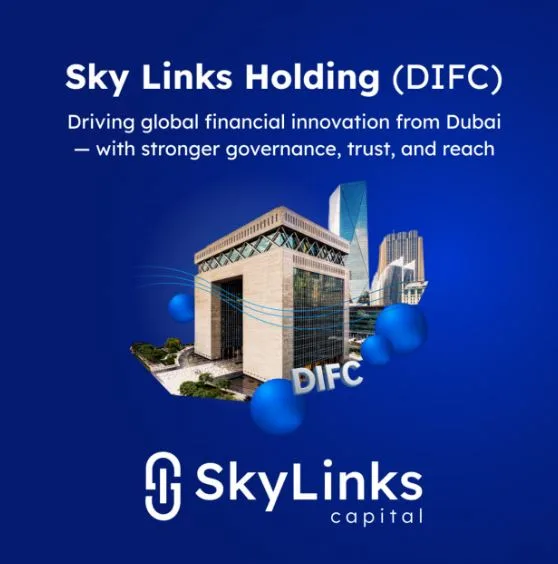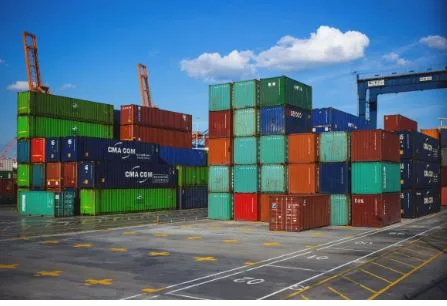What’s Next for the Global Economy? Insights from Financial Strategist Daniel Takieddine
As financial markets emerge from several years of pandemic-driven shocks, surging inflation, aggressive monetary tightening, and ongoing geopolitical instability, the question on every investor’s mind remains: what comes next for the global economy?
To help decipher the road ahead, financial strategist Daniel Takieddine, CEO of BDSwiss MENA and co-founder of Sky Links Capital, offers a grounded perspective shaped by years of experience across trading floors, executive boardrooms, and emerging market expansions.
Takieddine, who frequently appears on CNBC Arabia, Sky News Arabia, and Asharq Bloomberg, believes that while some economic indicators suggest stabilization, multiple risks continue to loom over the global economy as 2025 progresses.
A Global Economy Still in Transition
The global economy is currently navigating a precarious balancing act. After years of inflationary pressures, many developed economies have seen price growth cool, but not enough to fully relax monetary policy. Central banks, particularly the U.S. Federal Reserve, remain cautious about declaring victory too soon, concerned that inflation may remain sticky or resurge in certain sectors.
Meanwhile, the global manufacturing sector is experiencing divergent trends. Some Asian economies have seen renewed growth, while Europe continues to battle with sluggish industrial output, supply chain disruptions, and lingering energy price volatility. The war in Ukraine and tensions in the South China Sea add further layers of complexity to global trade dynamics.
Labor markets in many developed countries remain tight, creating upward pressure on wages even as economic growth moderates. This labor strength has added to the challenge faced by central banks attempting to walk a tightrope between controlling inflation and avoiding recession.
Shifting Patterns in Global Trade and Investment
Another defining feature of the current global economy is the changing nature of international trade and investment flows. Deglobalization, once a theoretical risk, is now a tangible trend as more countries move toward regionalization of supply chains, protectionist trade policies, and increased emphasis on self-sufficiency in critical industries such as semiconductors, healthcare, and energy.
While this trend benefits certain regions, it also creates long-term strategic challenges for global trade integration and multinational corporations that once relied on open borders and free movement of goods and services.
Takieddine observes that these shifts are forcing both governments and companies to adapt quickly. “Globalization isn’t ending—it’s evolving,” he explains. “The economic alliances of the future will be more fragmented but also more competitive, with regional blocs taking center stage.”
Energy Markets Remain a Wild Card
Energy markets remain highly sensitive to both supply disruptions and shifting demand patterns. While oil prices have stabilized from previous peaks, they remain volatile due to political tensions, OPEC+ decisions, and the energy transition toward renewables.
Major energy producers such as the U.S., Saudi Arabia, and Russia continue to influence pricing dynamics, while the acceleration of clean energy initiatives worldwide adds new layers of investment complexity. The Middle East, in particular, continues to play a pivotal role as it diversifies its economies through ambitious non-oil sectors while maintaining its energy export dominance.
For investors, energy remains both an opportunity and a source of potential market shocks, depending on how these competing forces evolve.
The AI Disruption and Its Economic Implications
One of the most profound forces now influencing global growth trajectories is the rapid development of artificial intelligence and automation technologies. AI is increasingly integrated across industries, transforming productivity, altering labor demand, and introducing new efficiency gains that could redefine economic growth potential in the coming decade.
However, AI adoption also presents complex regulatory, ethical, and labor market challenges. Nations that successfully balance innovation with regulation may secure significant long-term advantages, while others may fall behind in productivity and competitiveness.
Takieddine views AI as a structural force that investors cannot afford to ignore. “Artificial intelligence is becoming as influential to productivity as the internet once was to globalization,” he says.
A More Prominent Role for Emerging Markets
While developed economies continue to dominate global headlines, emerging markets are quietly regaining momentum. Several Middle Eastern and Asian economies have emerged from recent global crises with stronger balance sheets, favorable demographics, and ongoing reform agendas that are attracting both regional and global investment.
The Gulf Cooperation Council (GCC) countries, in particular, have become key players in global capital markets. Sovereign wealth funds, ambitious economic diversification plans, and a growing appetite for international partnerships have positioned the Middle East as a more influential force in global financial affairs.
Sky Links Capital, co-founded by Takieddine, has been part of this regional shift, focusing on building fintech-enabled brokerage services that can serve a new class of Middle Eastern investors increasingly participating in global markets.
Risks Investors Must Monitor
Despite pockets of resilience, the global economy is not without risks. Among the key concerns are:
- Persistent inflation volatility
- Renewed banking sector stress in certain regions
- Heightened geopolitical tensions
- Supply chain vulnerabilities
- Debt accumulation in both sovereign and corporate sectors
For investors, the challenge remains to maintain diversified portfolios while staying alert to shifting macroeconomic signals.
Adaptability Over Predictions
If there’s one theme that dominates Takieddine’s outlook for the global economy, it’s the need for adaptability. Investors who remain flexible—ready to shift sector exposure, rebalance across regions, and adjust risk profiles—are more likely to navigate the choppy waters ahead.
“Certainty is a luxury we don’t have right now,” Takieddine says. “But disciplined diversification, informed decision-making, and constant learning will continue to be the investor’s best defense.”
As the second half of 2025 unfolds, global markets are likely to remain a blend of opportunity and caution. For those willing to monitor both macroeconomic shifts and evolving megatrends, the next phase of the global economy may offer new frontiers—though not without heightened complexity.







